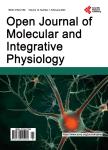Varied Aerobic Intensity Effects on Hormonal, Anthropometric, and Health Changes
Varied Aerobic Intensity Effects on Hormonal, Anthropometric, and Health Changes作者机构:Department of Biology and Physical Education College of Science and Mathematics Norwich University Northfield Vermont USA
出 版 物:《Open Journal of Molecular and Integrative Physiology》 (分子和综合生理学期刊(英文))
年 卷 期:2014年第4卷第3期
页 面:36-48页
学科分类:1002[医学-临床医学] 100214[医学-肿瘤学] 10[医学]
主 题:Middle-Aged Women Aerobic Training Resistance Training Metabolites Hormones Circumference
摘 要:The purpose of this project was to examine the effects of a 20-week training study, which included varied aerobic exercise intensity and identical resistance and flexibility training, on circumference, body mass, hormonal, health/fitness and psychophysical measures. Methods: Thirty-two of 40 recruited overweight middle-aged women were randomized into two training groups: low-intensity (LOW: -40% VO2peak and high-intensity (HIGH: -80% VO2peak), for a 20-week training program. Participants were weighed, measured, underwent VO2peak graded exercise tests, and had blood drawn pre-training and at 10- and 20-weeks. Results: Both groups experienced significant body mass loss at 10- and 20-weeks (LOW: p 0.05;p 0.01 and HIGH: p and circumference loss (10-weeks—LOW: waist, hip, and thigh regions (p 0.001);HIGH: arm (p 0.05), waist (p 0.05), hip (p 0.01), thigh (p 0.05);20-weeks—LOW: arm, waist, hip, thigh (p 0.001);HIGH: arm, hip, thigh (p 0.001) and waist (p 0.01)). Ghrelin levels were elevated in the LOW group (p 0.05) by the end of the 20-weeks of training, whereas the HIGH group had a significant decrease (p 0.01) at that time. Over the training period, leptin concentrations diminished significantly in both groups (LOW p 0.01;HIGH p 0.05) and were correlated to the body mass/ anthropometric changes. Discussion: Both low- and high-intensity produced significant loss in body mass and circumference measurements suggesting that it is not the intensity of exercise, but rather overall energy expenditure that should be considered. The advantage of high-intensity aerobic exercise is that it requires less time to produce the desired energy expenditure. The changes in ghrelin and leptin may have contributed to the energy intake during laboratory trials.



